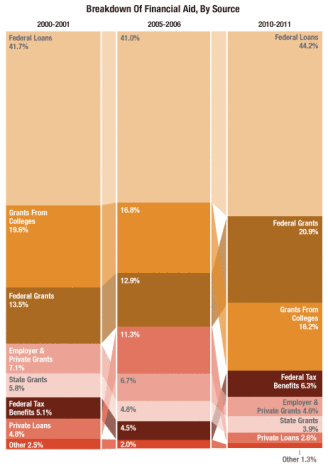The Fight for Financial Aid

With May 1st right approaching quickly, many Nashoba seniors are still attempting to figure out where they want to spend the next four years of their life attending college. One of the biggest pieces of this college puzzle is financial aid.
Every college takes information surrounding the applicant’s financial stance into consideration to determine a student’s financial aid award. This can include scholarships and grants which do not have to be paid back, or it can be federal loans, which do need to be paid back. The specific loan determines when it must be paid back and at what interest rate. The financial aid process itself can be very confusing and frustrating. Each school has their own requirements and deadlines.
One required document is the FAFSA (Free Application for Federal Student Aid), which every student must submit in order to receive aid. This uses both the student’s and parent’s income to determine how much the student’s family can actually contribute towards their education (called the expected family contribution or EFC). Many of the private institutions also require the CSS Profile (from College Board) which encompasses everything regarding the financial status of both the student and his or her parents.
This whole process of choosing whether to apply for aid or not and what type works best for a student’s family is complicated. It’s a topic that was discussed insufficiently during senior guidance seminar. But it shouldn’t have been, especially since it plays such an integral role in making a decision.
When asked whether she thought that the guidance seminars should touch upon applying for financial aid, Senior Lindsey Giuliano said, “Yes, definitely. They didn’t go over it at all, and it’s a really important part of applying to college.”
Fellow Senior, Megan Joyce, repeated this sentiment, saying that that was the one part of the college admissions process she didn’t know anything about.
The cost of affording a college education has been steadily increasing, and a financial aid offer can make or break a senior’s decision on attending a specific school. At some of the best institutes for higher education in America, the total fees for one year are over 60 thousand dollars. With the exception of multi-millionaires, no one can pay these astronomical tuition prices without help.
Though many colleges and universities do their best to meet the financial demands of all their applicants, sometimes it’s still not enough. Even with some aid, there are many families who still can’t afford to pay their contribution. This causes thousands of students and their families to take out enormous loans in order to pay. These massive student loans can linger over the student’s head for years after graduation.
Many of these worries cause students to choose a school that’s more affordable in order to save them from drowning in debt later in life. When asked whether the cost of attending or the amount of aid offered would influence her college decision, Morgan Vincent, another senior, said she would willingly pay, especially if it was for her first choice school.
On the other hand, Giuliano said that the amount of aid she received would influence her decision. “It’s important to me to have as little debt as possible by the end.”Joyce disagreed, “Despite the fact that I didn’t get a lot of money, I still wanted to go there [to her top choice] so I will probably be in debt for the rest of my life.”
The whole process of applying for financial aid can be fairly stressful, but it’s worth it in the end, especially when it enables students to afford their top choice college. Though many will receive great aid offers, others will be stuck with thousands of dollars in loans. However, the debt is temporary, but the education received can be priceless.





